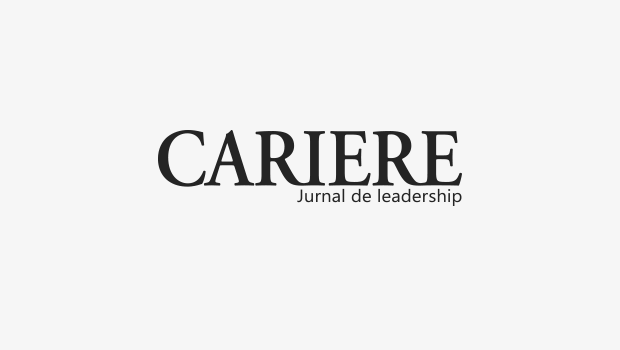Disruption meets Romania

„In a nutshell, Disruption is about brand belief, whereas Media Arts is about brand behavior“
We are at the grip of a terrible recession. People stopped taking risks, are confused, hesitant and more cautious because of their limited resources. In the advertising world the crisis has changed the way companies communicate their brands and products to the public. Better said, the crisis has awoken many actors involved in the process to reality. For us, as an agency, creativity is most important in all disciplines of communication. Creativity turned from nice to have to mandatory for our clients too.
Jean-Marie Dru, Chairman of TBWAWorldwide, developed the concept of “Disruption“ in the mid '80. Disruption is a means of creating something dynamic to replace something that has become static and repetitive. It is a driving success for brands, by collaboratively, collectively and systematically interrogating and challenging the conventional thinking that prevent so many brands and companies from succeeding.
The era of hyper competition has taught us that the only way to succeed is to stand for something special or, better said, unique. In the last 15 years, the focus of the methodology has moved progressively from convention to vision. Adidas believes that “impossible” is not a fact, but an opinion. Nissan explains that, everything they touch, they try to “shift”. Pepsi revitalizes the Pepsi generation theme by reminding us that, every generation “refreshes the world”. What makes products and services nowadays truly special are the ideas they stand for, the core values and beliefs.
Another important fact is that we now live in a digital world. The digital revolution ended quite some time ago and it changed the media landscape dramatically. In this brave new world, we do not talk to targets or consumers but to audiences who are not captive anymore. They can zap the TV if they are not interested, write on a blog if they want to create a revolution or write comments about their dislikes on Facebook. And all this can be shared in real time.These are the new places and spaces people experience and where they live their lives. They can simply judge brands on everything they do, on all initiatives they take.This is why a brand action speaks louder than words and the way a brand acts with the audience in the new media world is essential.
„We do not attack the target anymore with messages 360°. We moved nowadays into a more peaceful world, where conversation replaced bombardment and audience replaced target groups. And, in order to feed a constant conversation with your audience, you have to do it 365 days a year. And that includes all packaging, retail presence, websites, PR campaigns and CRM initiatives.“
The 360° brand communication is now history. Also, the war-like marketing speech met its end. We do not attack the target anymore with messages 360°. We moved nowadays into a more peaceful world, where conversation replaced bombardment and audience replaced target groups. And, in order to feed a constant conversation with your audience, you have to do it 365 days a year. And that includes all packaging, retail presence, websites, PR campaigns and CRM initiatives.
In TBWA’s words, the brand vision needs to be daily confirmed by the brand behavior. And this is where the second mind tool of TBWA comes into play: Media Arts. Find the best ways, the most effective, unexpected and insightful ways of using available media channels to deliver the message. Media Arts starts from the assumption that everything around is media: not only the TV set but also the screen of the remote control. Media Arts complement Disruption and provide the actionable solutions for the vision to become reality. Together, these two powerful concepts unleash the creative potential of our brands not only to conquer a larger share of market, but to invent new markets and gain a larger share of future.
Jean-Marie Dru, chairman of TBWA Worldwide and president of the newly created Creative Effectiveness Jury at the Cannes Advertising Festival, comes to Romania in late September to talk about the most powerful mind tool in the last decades’ advertising and communication: CREATIVITY.
For the last 19 years Jean-Marie Dru has helped redefine marketing strategies for TBWA clients like Apple, Nissan, Nivea and Mars. Thanks largely to Dru’s thinking, TBWA has grown within 10 years to become one of the world’s largest and most successful advertising network.
Jean-Marie Dru began his career in 1971 with Dupuy Compton (now Saatchi & Saatchi) as an account executive on Procter & Gamble and quickly rose to the position of Executive Creative Director. He then joined Young & Rubicam in Paris and co-founded the BDDP Group in 1984. After the merger of BDDP with TBWA in 1998, Jean-Marie Dru became President International of TBWAWorldwide. In early 2001, he was appointed President and CEO Worldwide, a position that he held until January 2008, when he moved to the role of Chairman.
Dru is not only the intellectual father of disruption, he has also authored four books on advertising and marketing, including his latest publication How Disruption Brought Order (Palgrave, 2007), Beyond Disruption (John Wiley & Sons Inc, 2002), Disruption (John Wiley & Sons Inc.1996) and Le Saut Créatif (Lattès 1984).
Jean-Marie Dru has been President of the Cannes Advertising Film Festival Jury twice – first in 1982 and again in 1998. He is a member of the European Advertising Association, and is also a professor at the Paris Institute of Political Studies, officially referred to as Sciences Po Paris.
In 2008, Jean-Marie Dru was awarded the French Légion d’Honneur for his long-lasting contribution to the advertising industry and to the business world.

